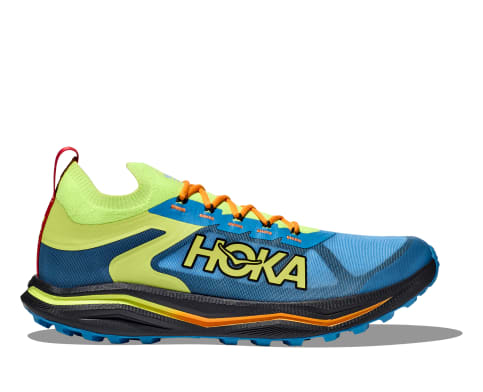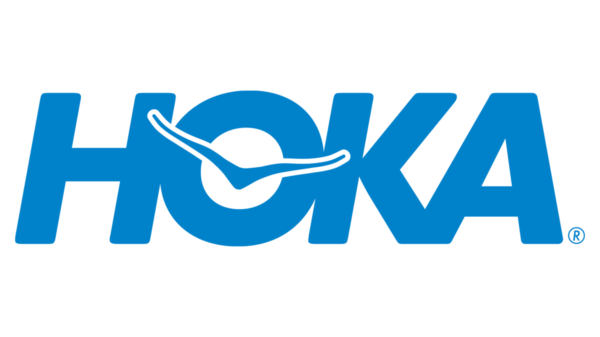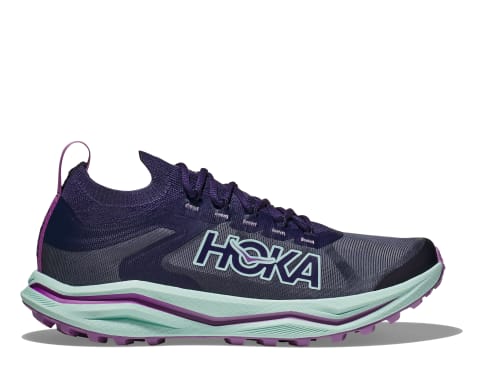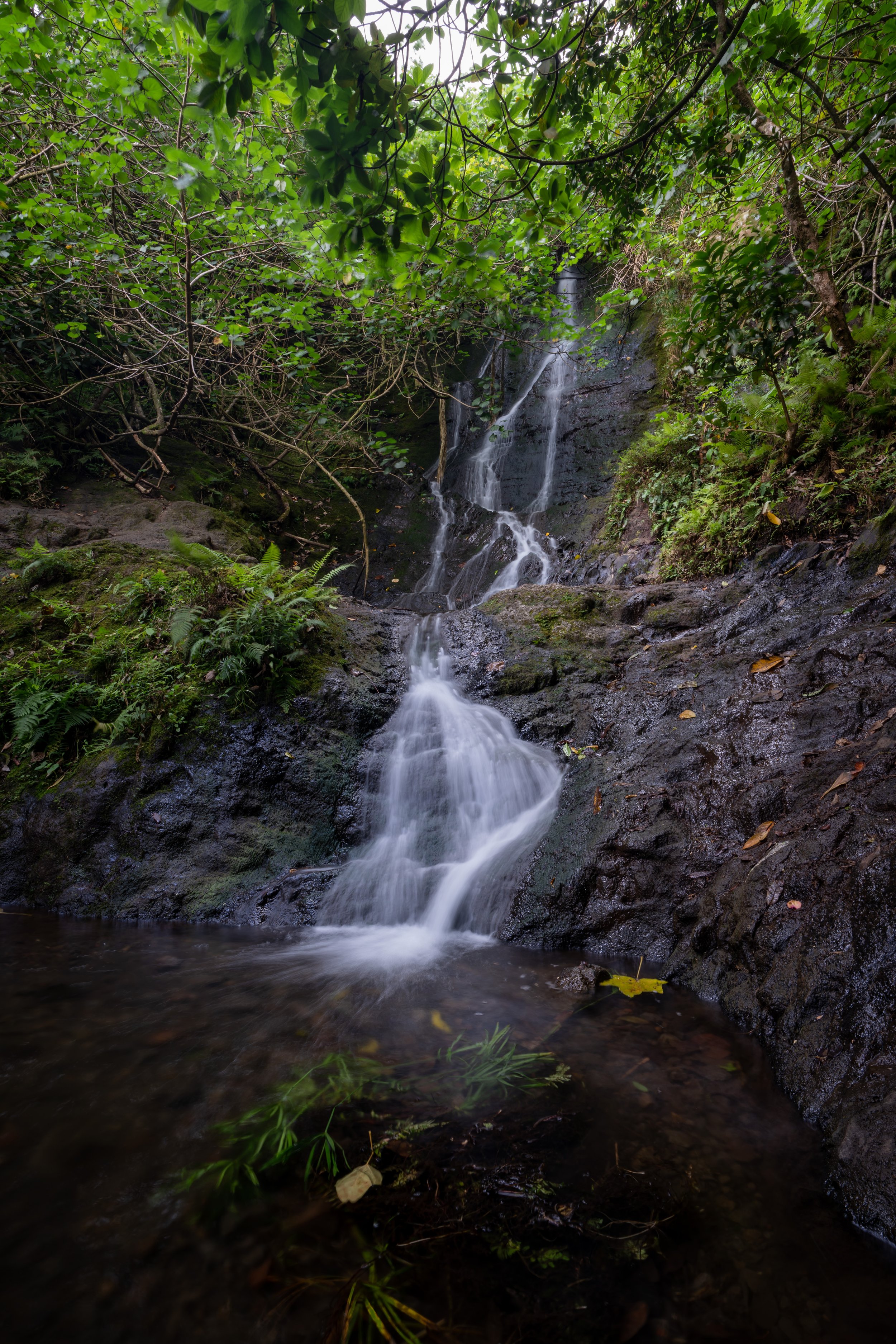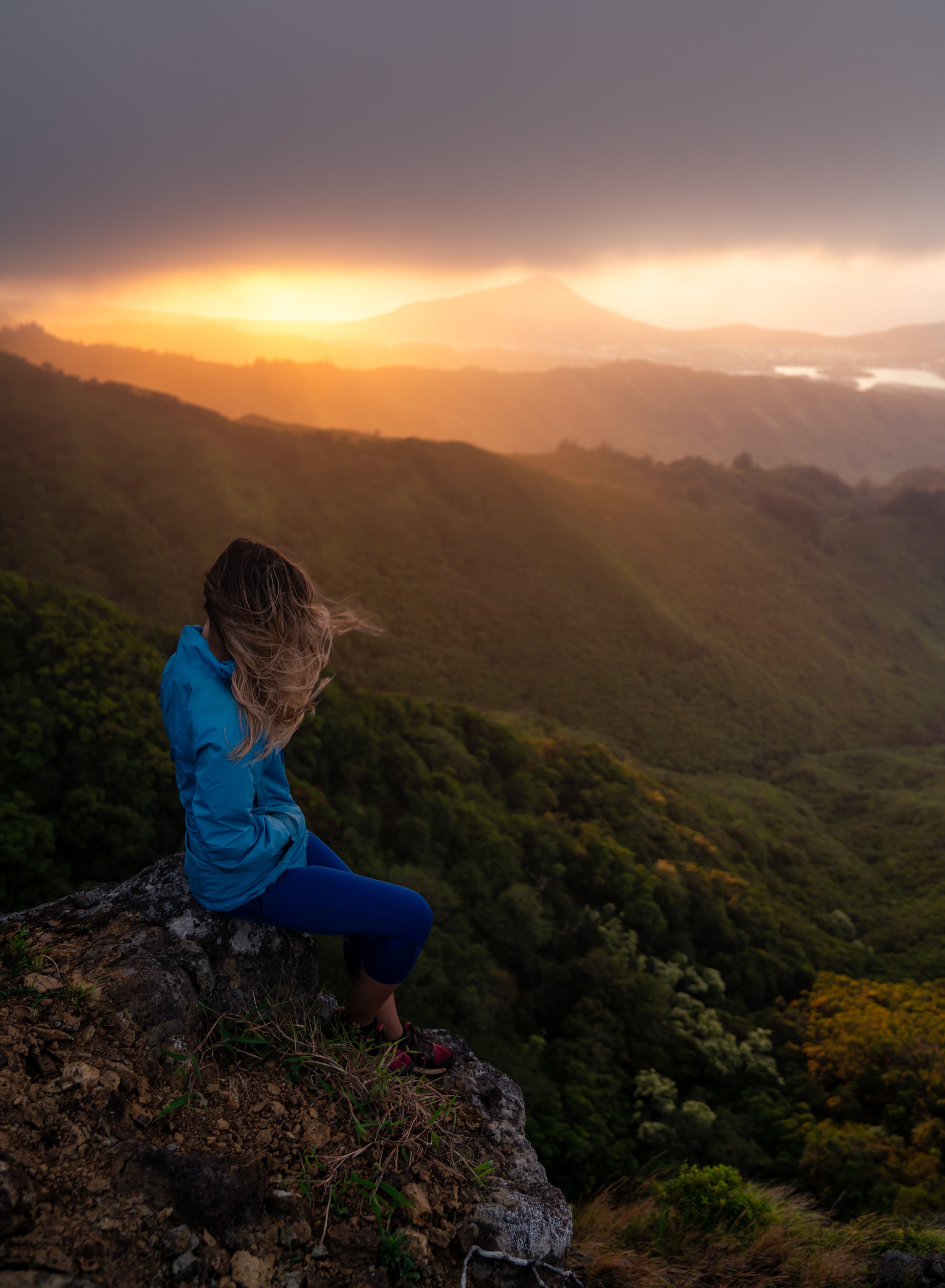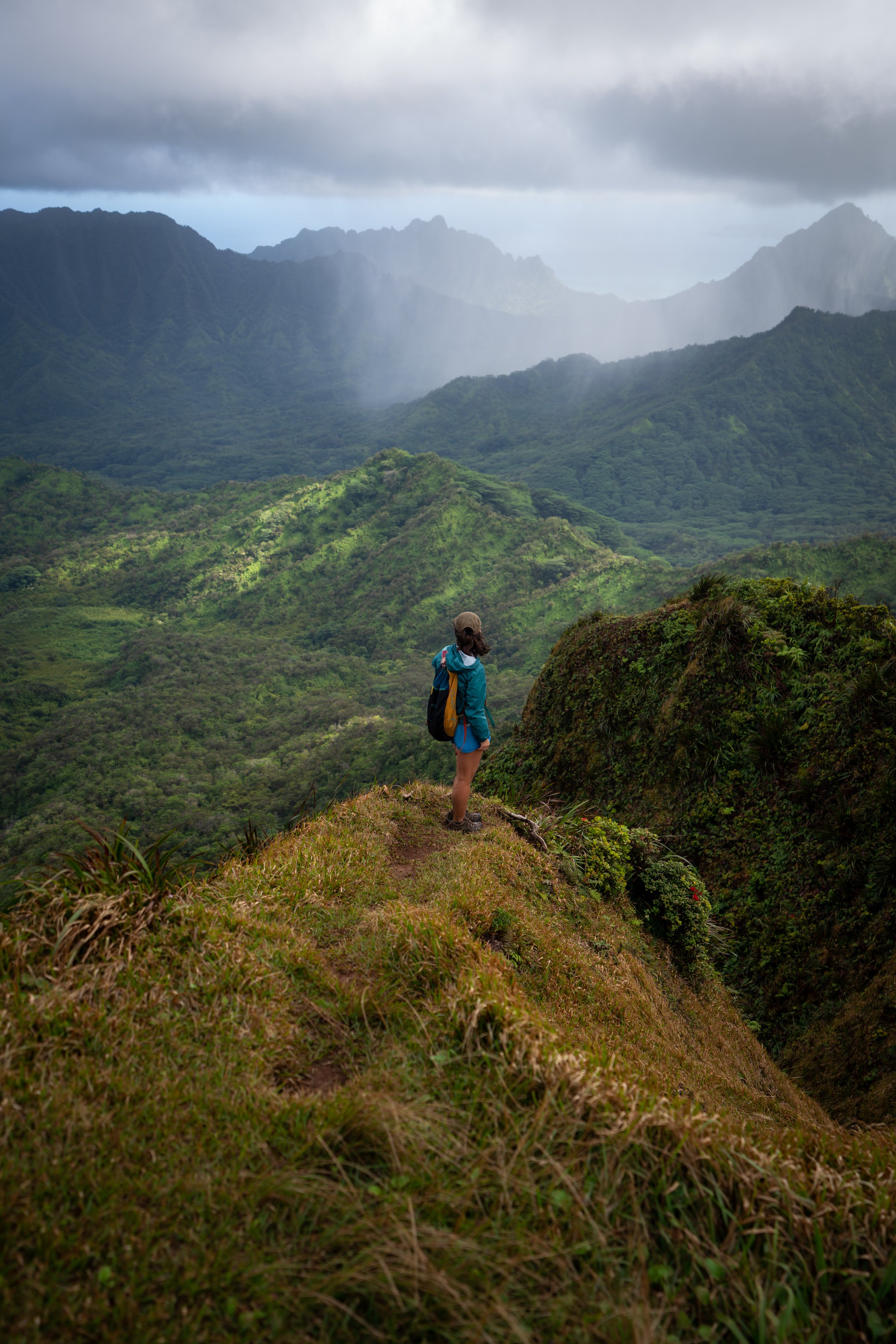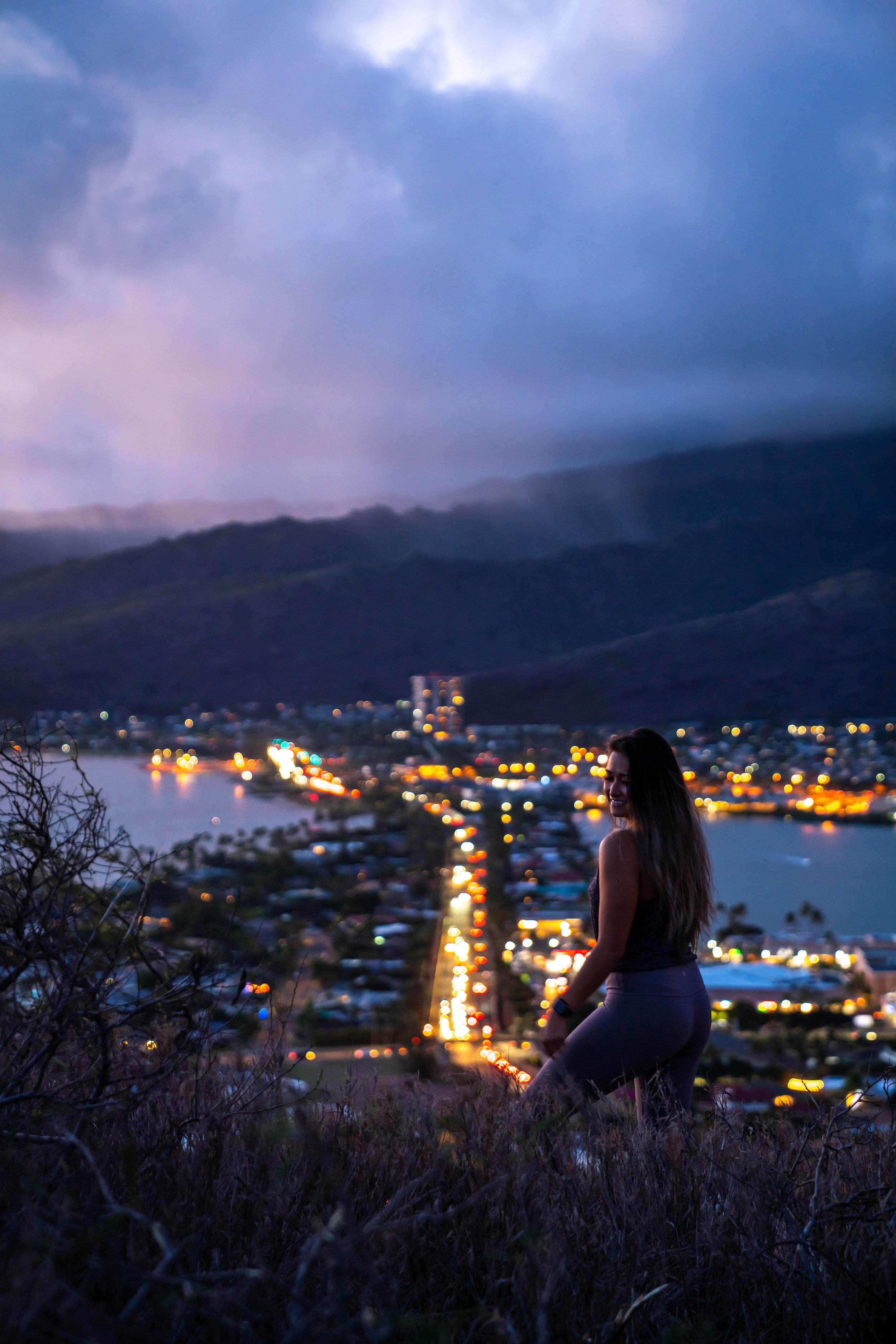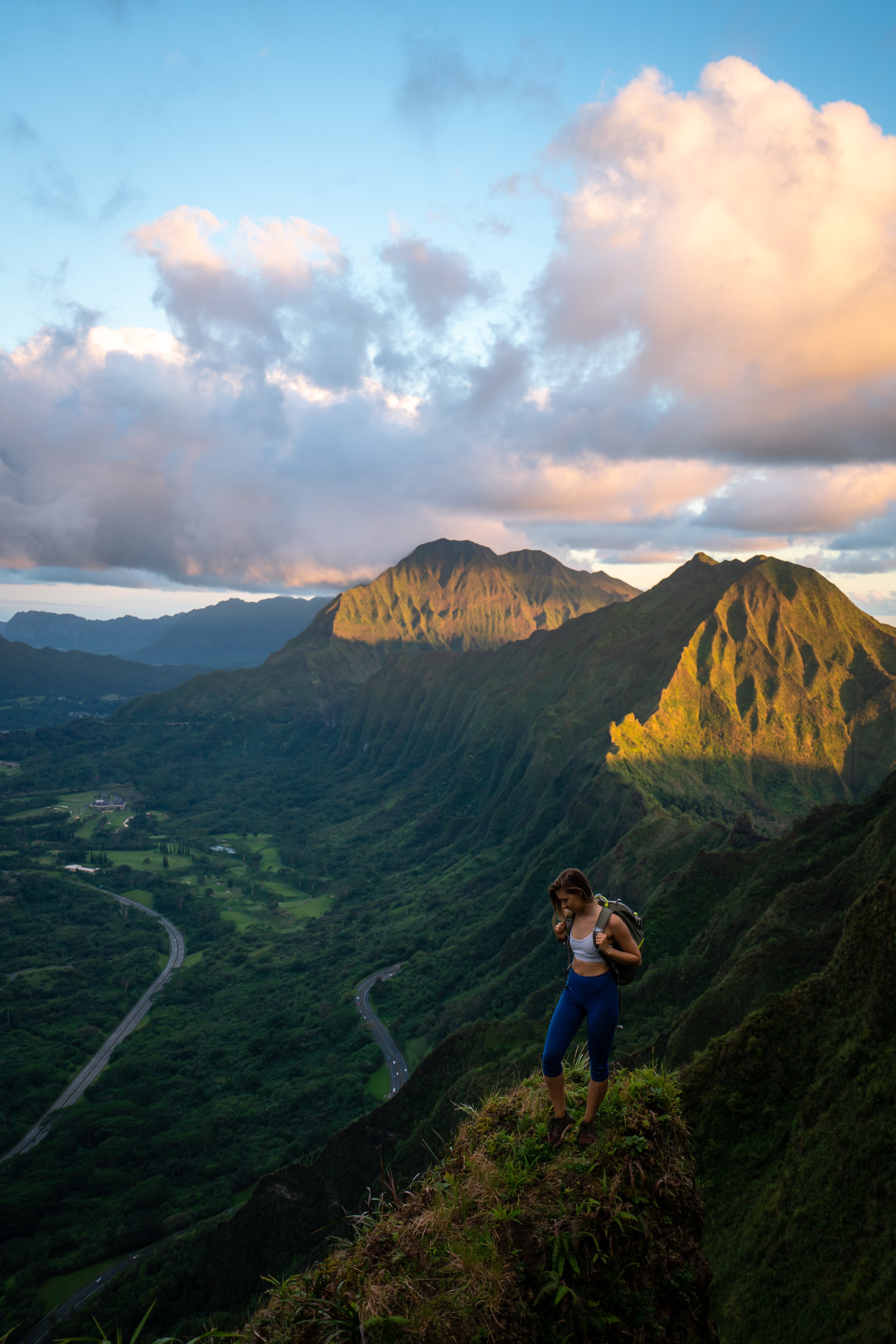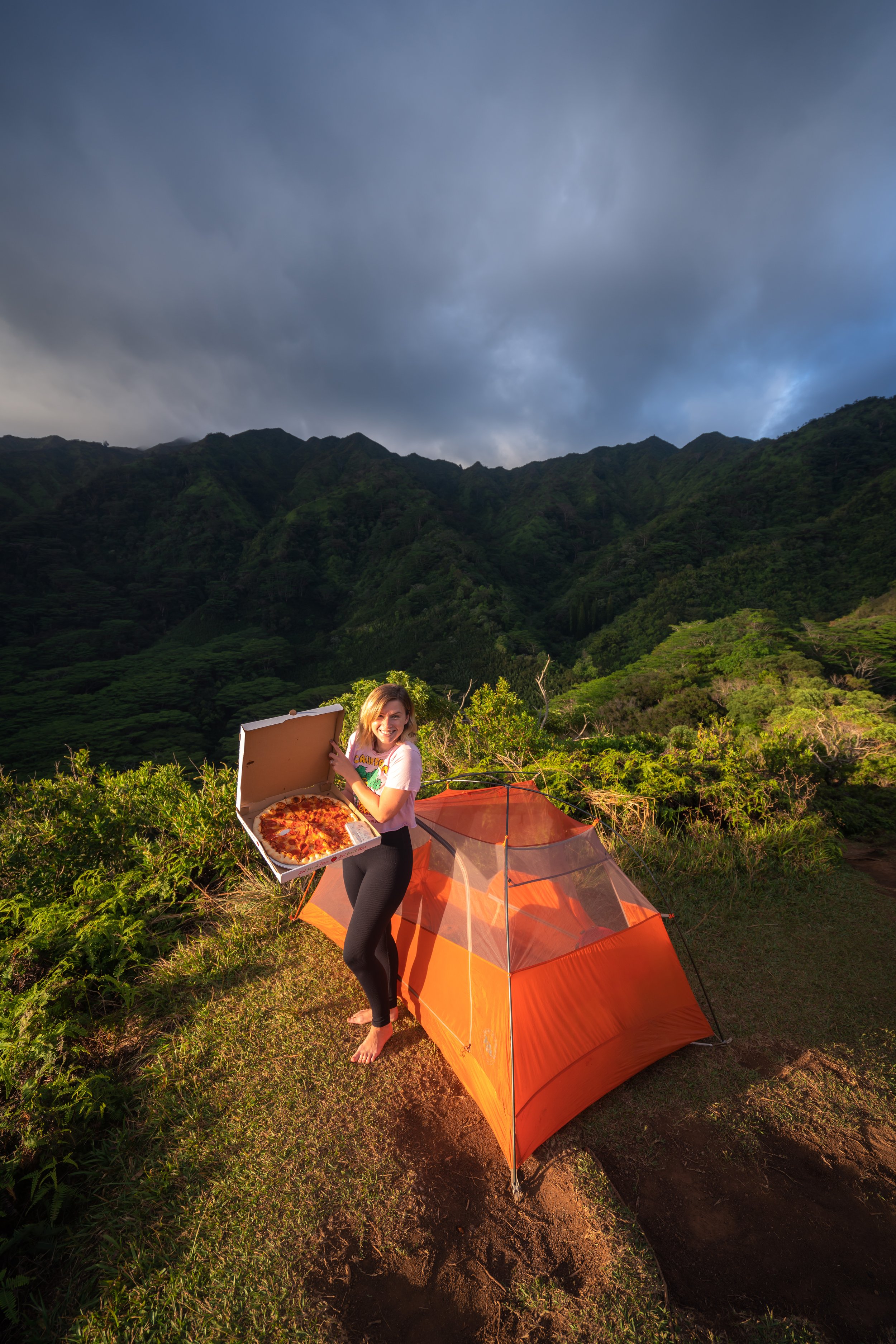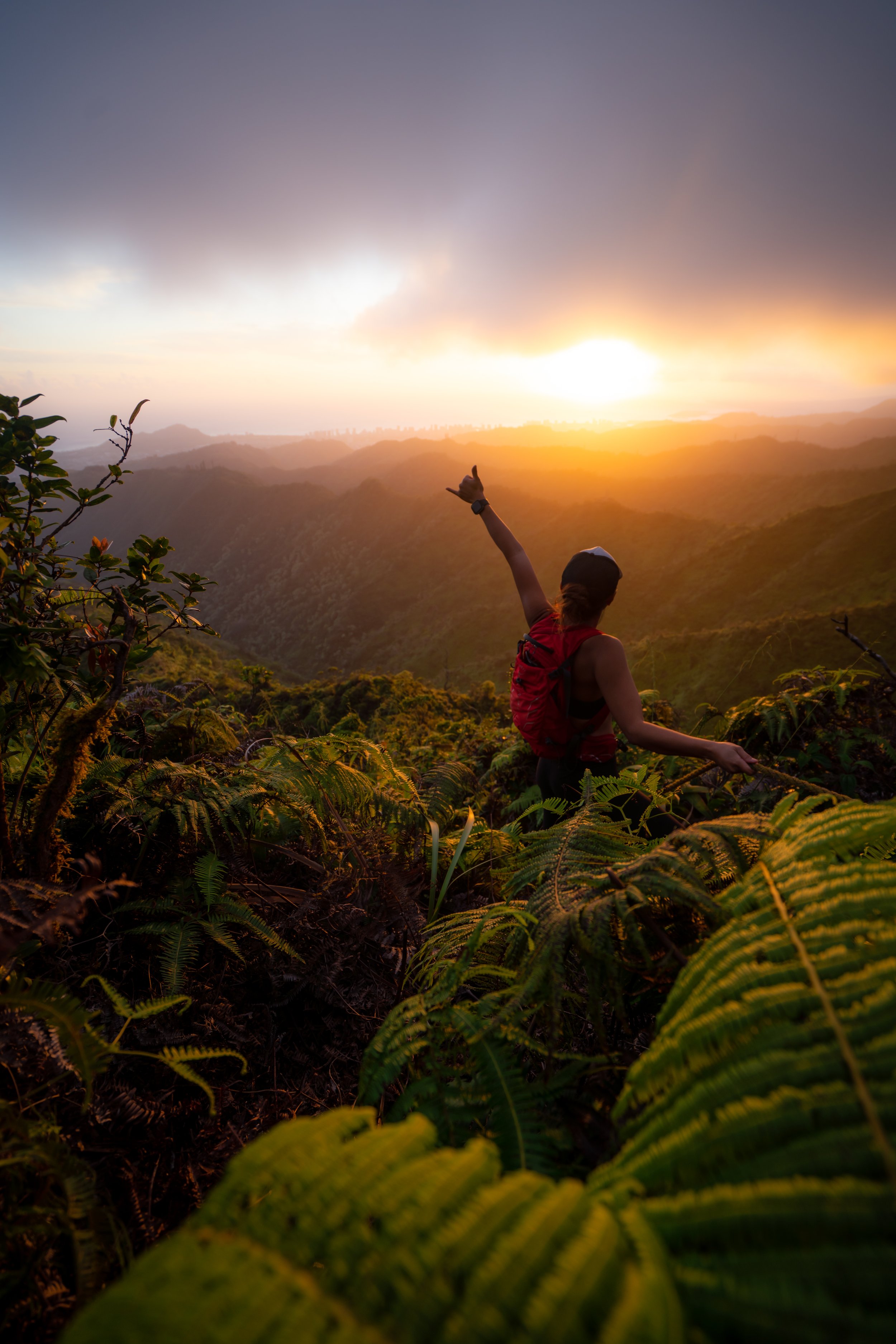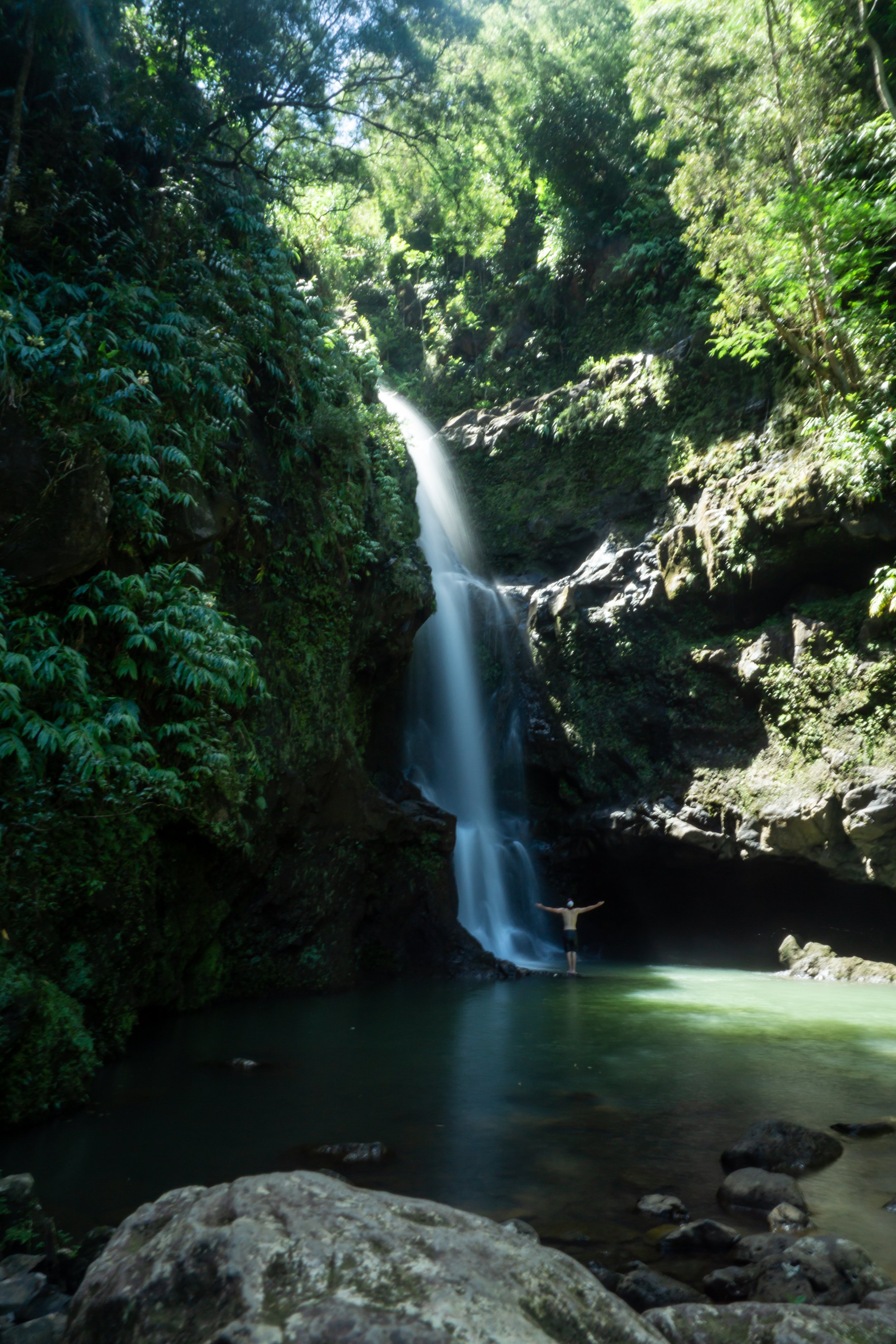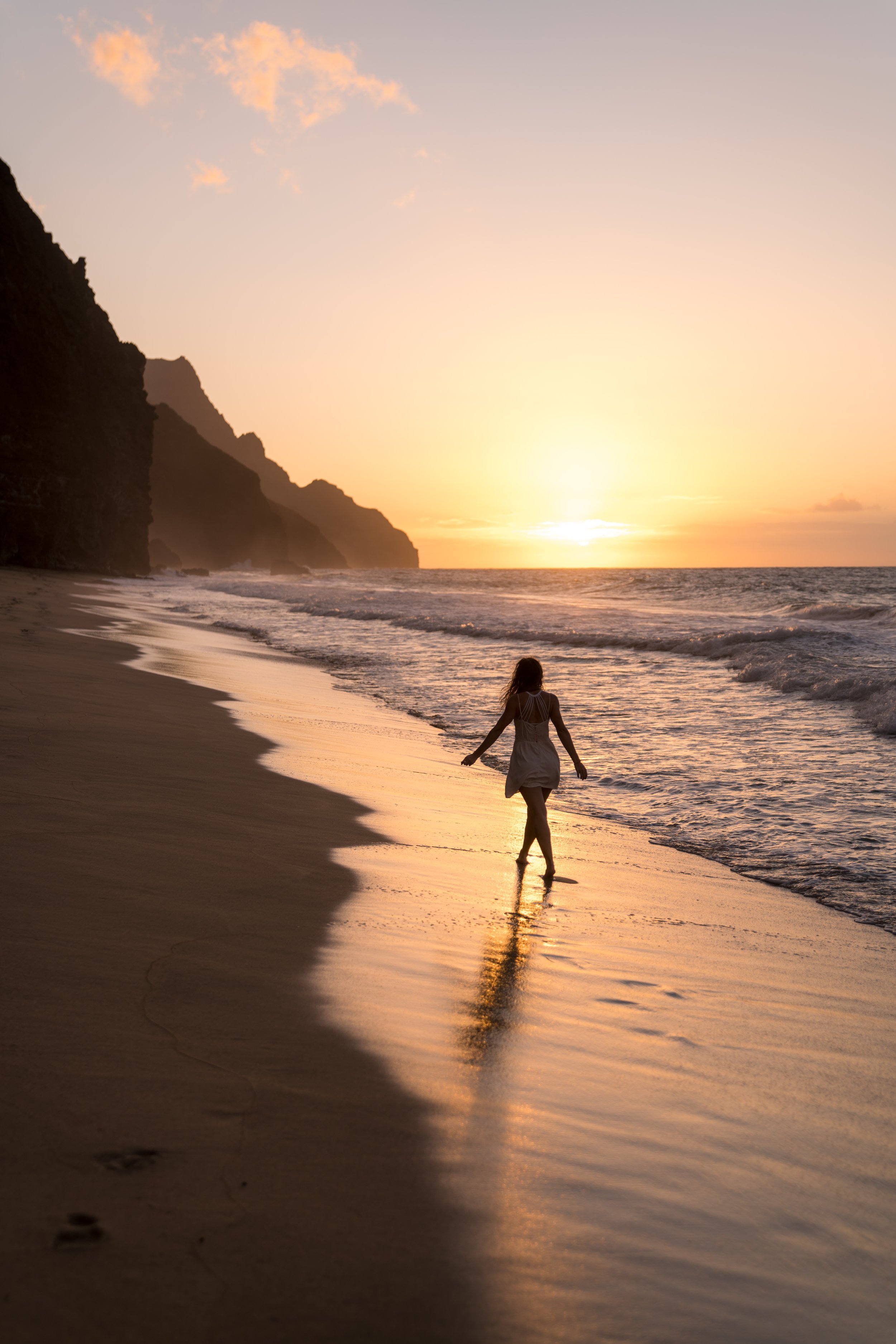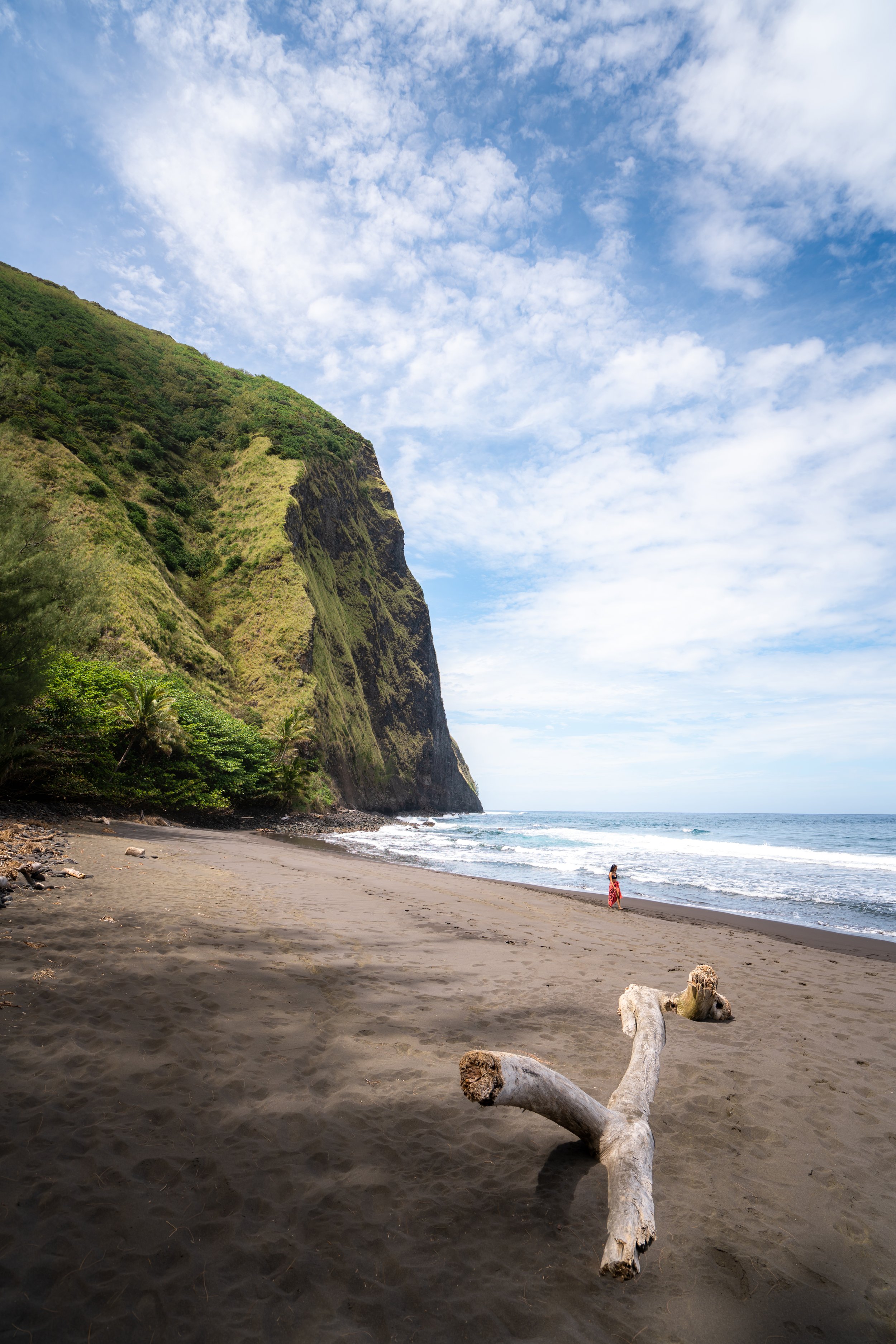Hiking the Waimano Falls Trail on Oʻahu, Hawaiʻi
Distance: 2.9 miles / 4.7 km
The Waimano Falls Trail, also called the Waimano Pools Trail, in the central Koʻolau Mountains on Oʻahu is one of the island’s best-kept secrets and can most similarly be compared with the Kalauao Falls Trail off the ʻAiea Loop, just to the south.
By this, I mean that Waimano Falls is not a designated or maintained trail. In fact, it is one of a few adventures off the Mānana Ridge Trail, which is the only maintained trail that begins from this trailhead in Pearl City.
That said, the Waimano Falls Trail is a steep and typically very muddy adventure that descends off Mānana Ridge to the hidden waterfall. This means the trail’s difficulty shouldn’t be judged solely by its 2.9-mile (4.7 km) roundtrip distance, as the steep elevation change can make the hike more challenging than it may initially seem—especially if it has rained recently!
Waimano Falls Trailhead Parking
Parking for the Waimano Falls Trail is located at the top of Komo Mai Drive in Pearl City, which is also the same trailhead as Mānana and ʻIliahi Ridge.
That said, finding parking near the trailhead can be difficult—especially on a weekend—because of how popular all three of these trails can be!
Google Maps Directions: Waimano Falls Trailhead
My Hawaiʻi Hiking Checklist
Osprey 3L Water Bladder - The Osprey 3L water bladder is the most universal hiking and backpacking water bladder on the market, and it’s my go-to because of the slide-off seal that allows it to be quickly filled from the top. Additionally, individual parts are easily replaceable, such as the bite valve.
Blister / Heel Protectors - I swear by these cheap, amazing heel protectors to prevent blisters for nearly every kind of hiking and backpacking that I do!
Black Diamond Headlamp - Personally, I recommend the Black Diamond Storm because it is one of the brightest, lightest, and longest-lasting headlamps on the market—and trust me, the weight-to-battery-life ratio really does matter!
Hiking / Trail Running Shoes - Depending on the type of trail, I prefer to use either the Keen Targhee for longer, more rugged hiking or the HOKA Zinal Trail-Running Shoe for lighter, less intense trails. In either case, both have been amazing to me for many years across countless environments, and both can be found in men’s and women’s sizes. - (Men’s Keen / Women’s Keen) (Men’s HOKA / Women’s HOKA)
Waterproof Rain Shell - You never know when it may rain, and I’ve learned over the years that a rain shell is far better than a rain jacket. By this, I mean that it’s best to have something that the water will roll right off of, which is why I recommend the Patagonia Torrentshell 3L available in both men’s and women’s sizes.
High SPF Sunscreen - Packing high-SPF sunscreen is a must for long days outside!
Hiking the Waimano Falls Trail
The Waimano Falls Trail begins at the Mānana Ridge Trailhead at the top of Komo Mai Drive in Pearl City.
With that in mind, the Waimano Falls Trail follows the Mānana Ridge Trail for the first 0.8 miles (1.3 km) before branching off and descending to the waterfall.
ʻIliahi-Mānana Ridge Junction
At about 0.3 miles (0.5 km), the Mānana Ridge Trail splits with the ʻIliahi Ridge Trail, located on the ridge to the north.
At this junction, go straight to stay on the Mānana Ridge Trail toward Waimano Falls, as ʻIliahi Ridge is typically a hike for another day.
Read My Separate Post: ʻIliahi Ridge Trail
Whether you’re hiking Waimano Falls or Mānana Ridge, the easiest trail is down to the right.
Waimano Falls-Mānana Ridge Junction
Shortly after the area in the photo above, the Waimano Falls Trail will branch off of Mānana Ridge on the right-hand side.
Read My Separate Post: Mānana Ridge Trail
Past the Mānana Ridge junction, the Waimano Falls Trail becomes much steeper and often more slippery after the trail has seen recent showers.
Considering this, it’s important to be aware that the hike out can be much more difficult than the hike to Waimano Falls because of how steep the descent is, as most of the 550 ft. (168 m) of elevation gain is located in a relatively short stretch.
At this split, you can go which ever way looks easier, as both routes meet up shortly after.
At the split in the photo below, go left.
Lower Waimano Falls
After roughly 1.5 miles (2.4 km), the trail reaches the North Fork of the Waimano Stream, where Waimano Falls is located.
That being said, Waimano Falls is rain-fed, meaning that the falls may be anything from stagnant pools to beautiful waterfalls, depending on recent rainfall.
Upper Waimano Falls
Just a short climb above the Lower Falls, you’ll find Upper Waimano Falls, which may be taller, but the pool is considerably shallower.
Simply put, don’t jump in Upper Waimano Falls!
Hiking Out
Remember to wear good shoes, as all 550 ft. (168 m) off of Mānana Ridge will have to be climbed on the hike back out!
Native Plants on the Waimano Falls Trail
Generally speaking, the Waimano Falls is relatively low in elevation, as it doesn’t climb very high up Mānana Ridge before decending down to the stream.
This means that there is not a lot of native plants to look out for, with the exception of ʻŌhiʻa lehua, Koa, Uluhe, and Hau on both the Mānana Ridge and Waimano Pools sections of the trail.
If you would like to learn more about these and many other native Hawaiian plants from across the islands, I encourage you to check out my separate post linked below.
Read My Separate Post: Native Hawaiian Plant Guide
More Oʻahu Adventures
If you’re interested in reading about some more amazing Oʻahu adventures, check out my separate posts below!
Best Hotels & Restaurants in Waikīkī
If you’re trying to decided where to stay on Oʻahu, check out my top 10 list for the best resorts and restaurants in Waikīkī.
I break down what makes one hotel a better choice over another, so that you can find the best fit for your stay on the island.
Read My Separate Post: Best Waikīkī Hotels & Restaurants
HNL Airport-Hotel Shuttle
Prices on ride-share apps like Uber/ Lyft cannot beat the price of booking your hotel shuttle prior to arrival. I say this because there are additional fees for ride-share airport pick-ups at Honolulu Airport (HNL), which is why I recommend booking your transportation in advance using the options below.
Additionally, the last option below will go as far as the Ko ʻOlina Resorts on the West Side and Turtle Bay on Oʻahu’s North Shore!
Best Way to Book Rental Cars!
I travel quite a bit, and I know firsthand that finding a good rental car deal can be a challenge, but that’s why I recommend comparing all of your options with Discover Cars.
In short, Discover Cars is a well-known, reputable business that allows you to search for the best deal across companies, and they have the best full-refund cancellation policy I’ve ever seen, valid up to 72, or sometimes even 48, hours prior to your reservation!
Book Here: Discover Cars
Visiting Other Islands
If you are visiting Oʻahu or heading to another island, check out some of my personal recommendations for Oʻahu, Maui, Kauaʻi, Molokai, Lānaʻi, and Hawaiʻi Island (Big Island) in these separate posts.
If you’re trying to decide which island is right for your visit, check out my overview about each island in the post below.
Read My Separate Post: What is the Best Hawaiian Island to Visit?
What is the Best Time of Year to Visit Hawaiʻi?
The weather in Hawaiʻi can often appear to be warm and beautiful throughout the year, but in my experience, there is a lot more to consider when planning what time of year to visit the islands, such as what island you are considering, what sides of each island do you plan to stay, what activities are you most interested in, the wildlife, and countless other nuanced variables that can all impact the type of trip you can expect to have.
For these reasons, I highly recommend reading through my separate article to not only understand my thoughts regarding the best time of year to come to Hawaiʻi but also what you need to consider based on the time of year that you plan to visit.
Read My Separate Post: What is the Best Time of Year to Visit Hawaiʻi?
10 Best Tours & Excursions on Oʻahu
There are a lot of different tour options to choose from on Oʻahu, but to make it easier to decide, I made a list of my favorite tours because some things simply are better with a local guide!
Read My Separate Post: Best Tours on Oʻahu
Safety
All hikes in Hawaiʻi should not be compared to trails outside of the islands, and hikers should exercise due caution on every adventure, given that many are extremely dangerous.
By this, I mean that Hawaiʻi is known for hot, humid weather, steep, dramatic, and unstable cliffs, and flash floods, which can occur without warning. Therefore, it is important that you check the local forecast, understand the physical condition of your entire group, and pack sufficient food and water before attempting any adventure.
Disclaimer
All information provided on this blog is for informational purposes only and is not intended to be a substitute for information or advice from qualified professionals or managing agencies.
Noah Lang Photography LLC makes no representations or warranties regarding the accuracy or completeness of the information provided here, and readers should use their own discretion, judgement, and seek professional advice where it is appropriate.
Furthermore, Noah Lang Photography LLC shall not be held responsible for any injuries, lost individuals, or legal issues arising from the use of information provided on this website, and if applicable, the above safety disclaimer should be referenced to provide a generic overview of the risks involved.
All said, the content on this blog is for the sole use of Noah Lang Photography LLC, and unauthorized use or reproduction of this content is strictly prohibited.
Disclosure
This post is not sponsored.
However, some of the links in this post are affiliate links, which means that I may earn a small commission if a purchase is made through one of those links. This commission comes at no additional cost to you, and I only recommend products that I personally use and believe will add value to my readers. Thank you for your support, which enables me to continue creating more!
To read the full privacy policy, click here.

About This Blog
Noah Lang Photography, also known as @noahawaii, is 100% reader-supported!
I do not accept guest articles or sponsored content of any kind on my blog, which is why, if you enjoy the outdoor and travel content I create, please consider buying me a coffee!
I appreciate your support, which helps me continue to keep this blog alive!










